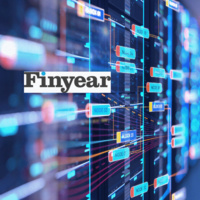With superfluid staking, liquidity providers no longer have to choose between backing proof-of-stake blockchains and supporting DEXes.
Osmosis Labs, one of the developers of the interchain DeX Osmosis, today announced the launch of Superfluid Staking, which advances the proof-of-stake concept by enabling staked capital to be actively useful as liquidity, while continuing to serve as a source of security and stability for blockchains. Liquidity providers (LPs) who superfluid stake their tokens will be rewarded for providing these dual services by earning staking rewards in addition to the rewards they earn for lending liquidity to Osmosis.
“The launch of Superfluid Staking on Osmosis is the culmination of a simple, but powerful insight - when you provide liquidity you lock up your tokens, which is also what you do when you stake. So if they're locked and have OSMO underlying them, why can't we actually use them in Proof of Stake? This would help provide stability and security to the chain, and Superfluid Staking is simply the mechanism by which you can earn additional rewards for providing that service,” said Sunny Aggarwal, Co-Founder of Osmosis Labs. “This innovation is an exciting step not just for the interchain ecosystem, but also the evolution of PoS, effectively creating the first ever ‘Proof of Useful Stake’”
On other blockchains, decentralized exchanges and proof-of-stake blockchains compete for the same resource — value — meaning that liquidity providers must compromise the security of the blockchain on which they are based in order to earn LP rewards. But Osmosis LPs receive an asset, LP shares, when they inject liquidity into the DeX, and by using that asset to secure a proof-of-stake blockchain by staking it (and the underlying tokens it represents), this zero-sum situation is resolved.
By doubly rewarding LPs, Superfluid Staking incentivizes the increased health of the $70 billion Cosmos ecosystem by securing smaller chains whose tokens are listed on the DeX while providing those chains with liquidity.
Superfluid Staking makes use of Cosmos’ multi-chain architecture, whereby decentralized applications are backed by other tokens compatible with the inter-blockchain communication protocol (IBC). In this interchain ecosystem, decentralized applications launch their own blockchains, known as “zones.” Unlike Ethereum, where each token is secured by ETH, each Cosmos zone must launch its own staking token with an independent set of validators. This means that smaller Cosmos zones are less secure than larger ones, dissuading investors from investing the funds that smaller zones need to grow. Superfluid Staking makes it possible for smaller zones to incentivize investors with high yields without sacrificing on security.
Because Osmosis is an AMM, Superfluid Staking also allows for a larger token, like ATOM, to be converted into the staking tokens of several smaller zones with which it has trading pairs without compromising the value of the original investment. This makes it more efficient to stake tokens in smaller zones, since a single pool could secure multiple zones.
Having established itself as a cutting-edge interchain DeX and integrated an Ethereum bridge to port ERC-20 tokens to Cosmos, Osmosis is taking a pioneering step for proof-of-stake blockchains. Superfluid Staking secures its status as the most innovative DeX available. Since its launch in June 2021, Osmosis has rapidly ushered users onto its platform, breaking $100 million in daily trade volume in January 2022 in its rapid growth as the most popular interchain AMM. It has the deepest liquidity out of any decentralized exchange in Cosmos, plus the most IBC connections.
About Osmosis Labs
Osmosis Labs is one of the developer teams building the Osmosis decentralized exchange and AMM platform on the Cosmos SDK. The team members previously helped build the foundations of Cosmos as members of the Tendermint team, which created the consensus mechanism that enables the interoperability between blockchains that is fundamental to the Internet of Blockchains, and are now working to build the forefront of DeFi in the Cosmos ecosystem.
About Osmosis
Osmosis brings privacy, transparency and accessibility to decentralized finance with an advanced Automated Marketing Maker (AMM) protocol built using the Cosmos SDK. The Osmosis blockchain is built of free, public and open-source software that allows for the creation and management of non-custodial, self-balancing, interchain token indexes. The platform is designed such that the most efficient solution is reachable through the process of experimentation and rapid iteration by leveraging the wisdom of the crowd. It achieves this by offering deep customizability to AMM designers, and a governance mechanism by which each AMM pool’s stakeholders (i.e. liquidity providers) can govern and direct their pools.
Osmosis Labs, one of the developers of the interchain DeX Osmosis, today announced the launch of Superfluid Staking, which advances the proof-of-stake concept by enabling staked capital to be actively useful as liquidity, while continuing to serve as a source of security and stability for blockchains. Liquidity providers (LPs) who superfluid stake their tokens will be rewarded for providing these dual services by earning staking rewards in addition to the rewards they earn for lending liquidity to Osmosis.
“The launch of Superfluid Staking on Osmosis is the culmination of a simple, but powerful insight - when you provide liquidity you lock up your tokens, which is also what you do when you stake. So if they're locked and have OSMO underlying them, why can't we actually use them in Proof of Stake? This would help provide stability and security to the chain, and Superfluid Staking is simply the mechanism by which you can earn additional rewards for providing that service,” said Sunny Aggarwal, Co-Founder of Osmosis Labs. “This innovation is an exciting step not just for the interchain ecosystem, but also the evolution of PoS, effectively creating the first ever ‘Proof of Useful Stake’”
On other blockchains, decentralized exchanges and proof-of-stake blockchains compete for the same resource — value — meaning that liquidity providers must compromise the security of the blockchain on which they are based in order to earn LP rewards. But Osmosis LPs receive an asset, LP shares, when they inject liquidity into the DeX, and by using that asset to secure a proof-of-stake blockchain by staking it (and the underlying tokens it represents), this zero-sum situation is resolved.
By doubly rewarding LPs, Superfluid Staking incentivizes the increased health of the $70 billion Cosmos ecosystem by securing smaller chains whose tokens are listed on the DeX while providing those chains with liquidity.
Superfluid Staking makes use of Cosmos’ multi-chain architecture, whereby decentralized applications are backed by other tokens compatible with the inter-blockchain communication protocol (IBC). In this interchain ecosystem, decentralized applications launch their own blockchains, known as “zones.” Unlike Ethereum, where each token is secured by ETH, each Cosmos zone must launch its own staking token with an independent set of validators. This means that smaller Cosmos zones are less secure than larger ones, dissuading investors from investing the funds that smaller zones need to grow. Superfluid Staking makes it possible for smaller zones to incentivize investors with high yields without sacrificing on security.
Because Osmosis is an AMM, Superfluid Staking also allows for a larger token, like ATOM, to be converted into the staking tokens of several smaller zones with which it has trading pairs without compromising the value of the original investment. This makes it more efficient to stake tokens in smaller zones, since a single pool could secure multiple zones.
Having established itself as a cutting-edge interchain DeX and integrated an Ethereum bridge to port ERC-20 tokens to Cosmos, Osmosis is taking a pioneering step for proof-of-stake blockchains. Superfluid Staking secures its status as the most innovative DeX available. Since its launch in June 2021, Osmosis has rapidly ushered users onto its platform, breaking $100 million in daily trade volume in January 2022 in its rapid growth as the most popular interchain AMM. It has the deepest liquidity out of any decentralized exchange in Cosmos, plus the most IBC connections.
About Osmosis Labs
Osmosis Labs is one of the developer teams building the Osmosis decentralized exchange and AMM platform on the Cosmos SDK. The team members previously helped build the foundations of Cosmos as members of the Tendermint team, which created the consensus mechanism that enables the interoperability between blockchains that is fundamental to the Internet of Blockchains, and are now working to build the forefront of DeFi in the Cosmos ecosystem.
About Osmosis
Osmosis brings privacy, transparency and accessibility to decentralized finance with an advanced Automated Marketing Maker (AMM) protocol built using the Cosmos SDK. The Osmosis blockchain is built of free, public and open-source software that allows for the creation and management of non-custodial, self-balancing, interchain token indexes. The platform is designed such that the most efficient solution is reachable through the process of experimentation and rapid iteration by leveraging the wisdom of the crowd. It achieves this by offering deep customizability to AMM designers, and a governance mechanism by which each AMM pool’s stakeholders (i.e. liquidity providers) can govern and direct their pools.
------------------------------------------------------------------------
Disclaimer: The text above is a press release that was not written by Finyear.com.
The issuer is solely responsible for the content of this announcement.
Avertissement : Le texte ci-dessus est un communiqué de presse qui n'a pas été rédigé par Finyear.com.
L'émetteur est seul responsable du contenu de cette annonce.
Disclaimer: The text above is a press release that was not written by Finyear.com.
The issuer is solely responsible for the content of this announcement.
Avertissement : Le texte ci-dessus est un communiqué de presse qui n'a pas été rédigé par Finyear.com.
L'émetteur est seul responsable du contenu de cette annonce.
Autres articles
-
W3i noue un partenariat stratégique avec Mintera pour accélérer l’adoption du cloud décentralisé
-
FINOM vise 1 million de PME et nomme des anciens de Meta et Bloomberg à ses directions marketing et produits
-
IA et services financiers, une alliance naturelle à consolider dans un paysage réglementaire mouvant
-
Agenda | Finyear est partenaire de l’événement DavosWeb3
-
Nomination | IPaidThat se dote d'un Secrétaire Générale






